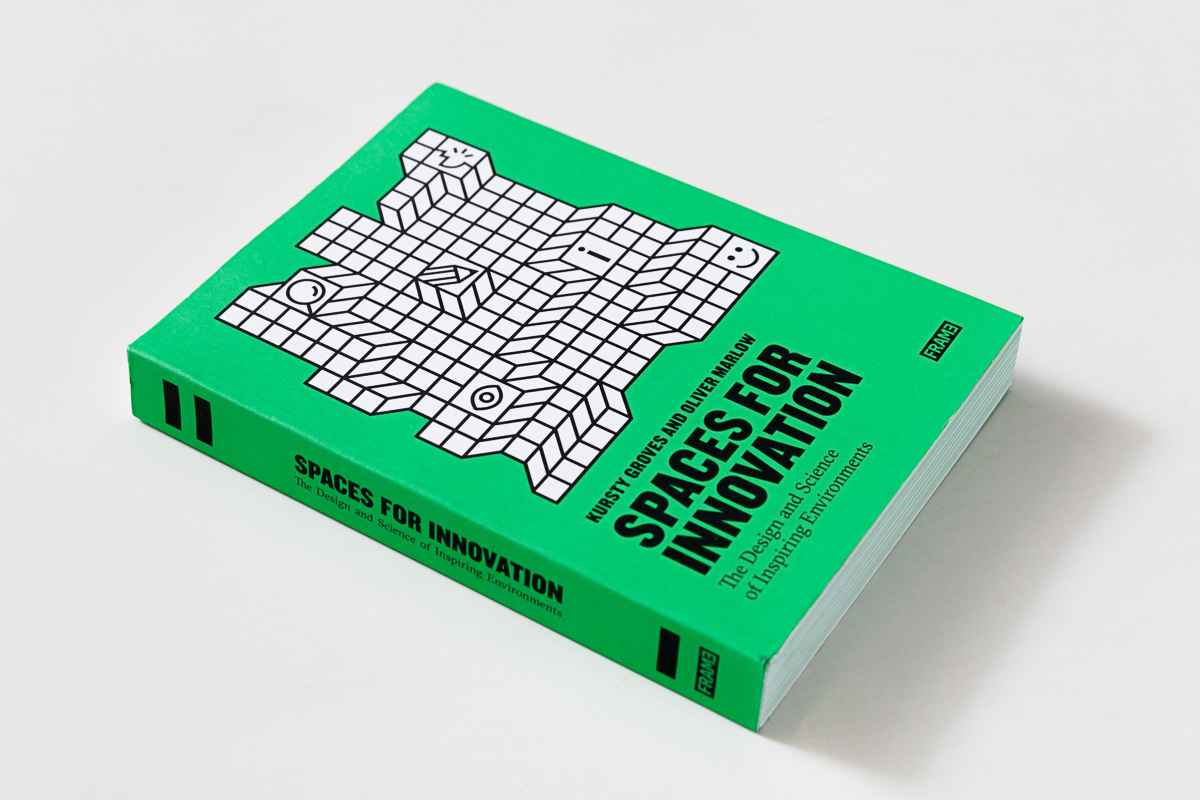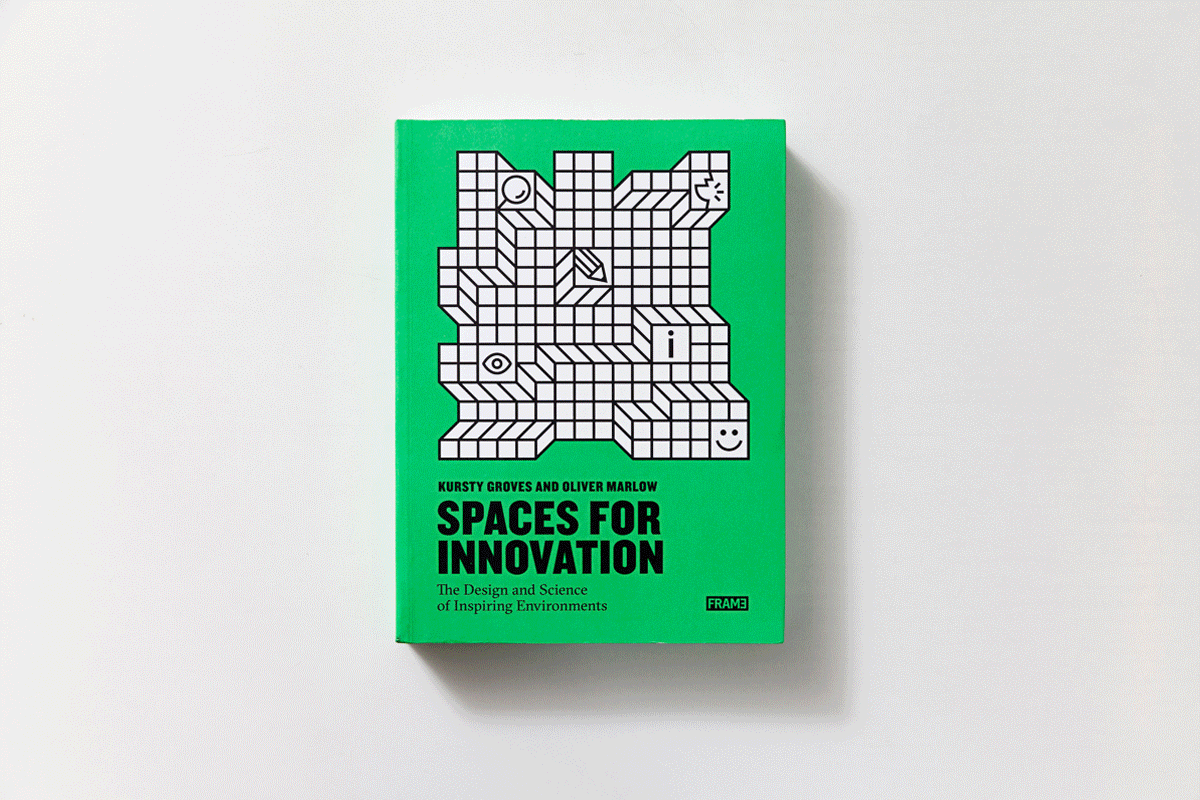This book tells us how mostly abstract concepts like “creativity” or “innovation” are turned into concrete things like a “work environment”

Offices for tech companies like Google, IDEO, and Microsoft are always cited as examples when one wants to understand how to design a “creative workplace.” But is it ever really conceived how mostly abstract concepts like “creativity” or “innovation” are turned into concrete things like a “work environment”? The book, ‘Spaces for Innovation: The Design and Science of Inspiring Environments’ may give that answer to the reader, as it explores the relationship between the physical design of working environments and levels of creativity and innovation.
‘Spaces for Innovation,’ written by Kursty Groves, a design and workplace innovation consultant, and Oliver Marlow, a designer and writer who is also one of the first to pioneer the concept of co-working, is comprised of 10 important components of work environment design: The Purpose, The Leadership, The Invitation, The Experience, The Spatial Context, The Process, The Resources, The Outcomes, and The Legacy. Each of these components has its own definition. The Spark, for instance, concerns the driving forces like the economy, society, demography, technology, and global trends that shape and influence our ways of working. Another example is the Legacy, which concerns the lasting impression of the space and, by extension, the brand. Each part of the content also comes with case studies and an analysis of interesting working spaces like those of Airbnb, d.school, Xin Dan Wei, and iHub Nairobi. They also come with interviews of the people behind those working spaces, ranging from designers and researchers to marketing consultants. Because of this exploration into each meticulous detail, ‘Spaces for Innovation’ indeed gives readers much more knowledgeable details on the topic than many other average books that merely show pictures of office interiors.

ออฟฟิศบริษัทเทคโนโลยีไม่ว่าจะ Google, IDEO หรือว่า Microsoft ถูกยกมาเป็นกรณีศึกษาอยู่บ่อยครั้งเมื่อมีใครต้องการทำความเข้าใจการออกแบบสภาพแวดล้อมการทำงานที่สร้างสรรค์ (creative workplace) แต่เคยสงสัยกันไหมว่าคำที่ค่อนข้างนามธรรมอย่าง “สร้างสรรค์” หรือแม้แต่ “นวัตกรรม” นี้มันถูกทำให้กลายมาเป็นรูปธรรมอย่าง “สภาพแวดล้อมการทำงาน” ได้อย่างไร Spaces for Innovation: The Design and Science of Inspiring Environments หนังสือที่ว่าด้วยการศึกษาความสัมพันธ์ระหว่าง การออกแบบเชิงกายภาพของสภาพแวดล้อมการทำงานกับระดับของความสร้างสรรค์และนวัตกรรม อาจจะพอช่วยให้คำาตอบเราได้อยู่บ้าง
Spaces for Innovation เขียนโดย Kursty Groves ที่ปรึกษาด้านการออกแบบและนวัตกรรมในการทำงาน และ Oliver Marlow นักออกแบบและนักเขียน ซึ่งเป็นคนแรกๆ ที่นิยามสิ่งที่เราเรียกกันว่า co-working อย่างที่เรารู้จักกันทุกวันนี้ หนังสือถูกแบ่งเนื้อหาออกเป็น 10 องค์ประกอบสำคัญที่ใช้ในการออกแบบสภาพแวดล้อมการทำงาน คือ The Purpose, The Leadership, The Invitation, The Experience, The Spatial Context, The Process, The Resources, The Outcomes และ The Legacy โดยแต่ละองค์ประกอบนั้นต่างก็มีนิยามในตัวของมันเอง ยกตัวอย่างเช่น The Spark ที่พูดถึงปัจจัยขับเคลื่อนภายนอกต่างๆ ไม่จะเศรษฐกิจ สังคม ประชากรศาสตร์ เทคโนโลยี หรือเทรนด์ที่เกิดขึ้นทั่วโลก ที่ก่อร่างและมีอิทธิพลต่อวิธีการทำงานของเราในปัจจุบัน หรือ The Legacy ที่หมายถึงการสร้างความประทับใจสุดท้ายของพื้นที่ เพื่อให้มันเป็นเหมือนกับเรื่องราวที่คนจะบอกต่อเมื่อพูดถึงแบรนด์ต่อไป ทั้งนี้ ในแต่ละหัวข้อยังมาพร้อมกับกรณีศึกษาและบทวิเคราะห์ของพื้นที่ทำงานต่างๆ ที่น่าสนใจ เช่น Airbnb, d.school, Xin Dan Wei, iHub Nairobi รวมถึงบทสัมภาษณ์ตัวละครผู้อยู่เบื้องผลงานต่างๆ ทั่วโลก ทั้งนักออกแบบ นักวิจัย หรือที่ปรึกษาเชิงกลยุทธ ด้วยความเป็นคู่มือที่นำเสนอรายละเอียดปลีกย่อยต่างๆ ออกมาได้อย่างเข้มข้นนี้ ทำาให้ Spaces for Innovations ทำงานได้ดีกว่าหนังสือรวมภาพอินทีเรียของออฟฟิศต่างๆ ที่เรามักเจอตามชั้นหนังสือได้อยู่มากโขเลย

TEXT: PAPHOP KERDSUP
PHOTO: KETSIREE WONGWAN
frameweb.com

